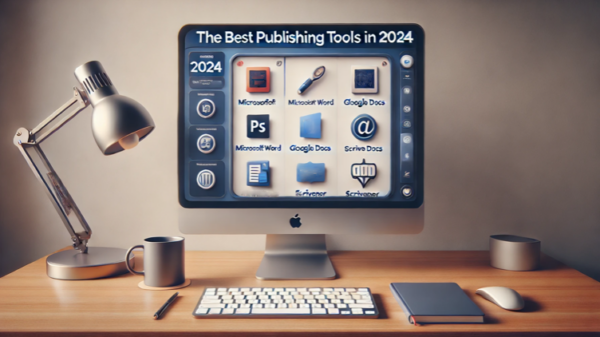In the writing process, feedback is one of the most valuable tools a writer can receive. While crafting a story is often a solitary endeavor, getting an outside perspective is essential to ensuring the narrative resonates with readers. Feedback helps identify areas that might be unclear, underdeveloped, or inconsistent. This is where beta readers play a crucial role.
Since beta readers read revisions influenced by alpha feedback, they can offer feedback on how the story flows, whether characters are relatable, and if the plot is engaging. By reviewing an early draft, beta readers help authors refine their work before it reaches a more formal editing stage, making them an indispensable part of the writing journey.
What Are Beta Readers?
A beta reader is someone who reads an early draft of a manuscript and provides feedback from a reader’s perspective. Unlike professional editors or critique partners, beta readers aren’t looking for grammar mistakes or structural issues. Instead, they represent the target audience, offering insights into the story’s flow, character development, and overall enjoyment. Their honest feedback helps the writer understand how the book will be received by future readers. Incorporating a few friends, along with professional authors and family members, can enhance the feedback received.
Your Publishing Journey Awaits – Start NowWhile professional editors focus on refining the text for publication, beta readers provide an essential perspective on how engaging and relatable the story is to a general audience. By seeing the manuscript through the eyes of the average reader, a beta reader can help shape it into a more compelling and polished work.
The Benefits of Using Beta Readers
Beta readers play a crucial role in refining a manuscript by providing constructive criticism and offering early-stage feedback that can uncover hidden flaws. One of the primary benefits of using beta readers is their ability to identify plot holes—gaps or inconsistencies in the storyline that may confuse readers. They can also spot character inconsistencies, where a character’s actions or personality doesn’t align with their development, as well as pacing issues, where the story might feel too rushed or too slow in certain parts.
The role of beta readers goes beyond pointing out mistakes. They provide constructive feedback on elements like character development, narrative flow, and emotional impact. This insight allows authors to see how their story is perceived by readers who aren’t familiar with their vision, making it easier to fine-tune the manuscript. Engaging in creative writing courses or workshops can enhance one’s ability to provide valuable feedback as a beta reader.
Another advantage of using multiple beta readers is getting a range of opinions. What one reader may enjoy, another might find unclear or underwhelming. By gathering feedback from different perspectives, authors can spot common issues that need addressing while considering varied interpretations of their work. This broader view helps ensure the story resonates with a wider audience before it reaches its final published form, making beta readers an invaluable part of the revision process.
How to Find Beta Readers
Finding the right beta readers can make a huge difference in the feedback you receive. One of the best places to start is within writing communities. Writing groups, both online and in-person, often have members who are willing to exchange feedback on early drafts. Fellow writers can be excellent beta readers since they understand the writing process and can offer detailed insights. However, it’s also important to seek out readers who are purely part of your target audience, as they will provide feedback from a reader’s perspective rather than a writer’s technical lens. Engaging with other writers at literary events and through author communities can yield valuable insights and feedback.
Social media platforms are another great resource for finding beta readers. Facebook groups, Reddit communities, and Twitter (X) writing circles often have dedicated spaces for authors seeking beta readers. You can post a call for volunteers, specifying your book’s genre and any specific feedback you’re looking for. Many readers in these social media groups are eager to help and enjoy being part of the creative process.
Your Publishing Journey Awaits – Start NowAdditionally, book fairs, writing conferences, and local events provide opportunities to network with readers who may be interested in beta reading. You can also tap into your own network, asking friends, family members or acquaintances who enjoy reading the genre you’ve written. Be sure to approach readers who align with your target audience—whether they prefer mystery, romance, or science fiction—to ensure the feedback reflects how your book might resonate with future readers.
Finding beta readers who genuinely connect with your genre and style is key to getting the most helpful and relevant feedback.
How to Prepare Your Manuscript for Beta Readers
Before sharing your manuscript with beta readers, it’s essential to prepare it for feedback. Here are some steps to follow:
- Editing and Revisions: Ensure your manuscript is in its best shape by completing any necessary editing and revisions. This will help you present a polished draft that beta readers can focus on without being distracted by obvious errors.
- Formatting: Format your manuscript according to genre and style guidelines. Proper formatting makes it easier for beta readers to concentrate on the content rather than getting sidetracked by inconsistent or confusing presentation.
- Clear Instructions: Provide clear instructions on what you’re looking for in terms of feedback. This can include specific questions or areas of focus, such as character development, plot consistency, or pacing. Clear guidance helps beta readers provide the most relevant and useful feedback.
- Confidentiality Agreement: Consider having beta readers sign a confidentiality agreement to protect your work. This ensures that your manuscript remains secure and gives you peace of mind while sharing your creative efforts.
- Manuscript Length: Ensure your manuscript is a reasonable length for beta readers to review. Typically, this is between 50,000 to 100,000 words. A manageable length makes it more likely that beta readers will complete the review and provide thorough feedback.
By preparing your manuscript in this way, you’ll be able to get the most out of your beta readers’ feedback and ensure they can provide you with the best possible insights.
Working With Beta Readers: Asking the Right Questions
To get the most valuable feedback from beta readers, it’s essential to ask specific questions that target key story elements. Vague requests like “What did you think?” won’t give you the detailed insights you need. Instead, craft questions that focus on areas you’re unsure about or want to improve.
Here are a few examples:
- Do any parts of the story feel slow or rushed?
- This helps to address pacing
- Do the characters’ motivations feel clear and consistent throughout the narrative?
- This helps in addressing clarity in your writing and solidify a consistent flow throughout the story
- Do any sections feel confusing?
- This can help to clarify the readers’ understanding of plot development
- Were there moments in the narrative where you felt disengaged or uninterested?
- Questions like this can help encourage constructive criticism such as identifying plot holes or suggesting areas where emotional impact could be stronger.
Providing your beta readers with a short list of targeted questions will help guide their feedback and ensure it’s as useful as possible. Remember to focus on areas where you feel uncertain, whether it’s a particular scene, a character arc, or overall pacing. By asking the right questions, you’ll gain feedback that can significantly improve your manuscript and move it closer to its final form.
The Difference Between Alpha Readers and Beta Readers
Alpha readers and beta readers serve distinct roles in the writing process, with each offering feedback at different stages of manuscript development. Alpha readers are typically the first to see a story in its early drafts, focusing on big-picture elements like plot structure, character development, and overall direction. Their feedback is more general, helping authors shape the foundational aspects of the story before diving into finer details.
In contrast, beta readers come into the process later, once the manuscript is more polished. They focus on providing writing feedback from a reader’s perspective, identifying issues like pacing, character inconsistencies, or areas where the story may lag. While alpha readers help with the early construction of the story, beta readers provide insights that reflect how future readers will perceive the final version. By using both an alpha reader and beta readers, writers can ensure their story evolves from rough draft to a well-rounded, polished book.
Finding the Right Beta Reader Mix
Finding the right beta reader mix is crucial to getting a well-rounded view of your manuscript. Here are some tips to help you find the right mix:
- Diverse Perspectives: Look for beta readers with diverse perspectives, including different ages, genres, and backgrounds. This diversity will provide a broader range of insights and help you understand how various readers might perceive your story.
- Target Audience: Ensure your beta readers are part of your target audience. Feedback from readers who enjoy your genre and style will be more relevant and useful, helping you gauge how your manuscript will be received by your intended readers.
- Writing Experience: Consider beta readers with writing experience. They can offer valuable feedback on the writing craft, helping you improve elements like narrative structure, character development, and dialogue.
- Non-Writers: Also, consider beta readers who are non-writers. They can provide feedback on the story and characters without being influenced by writing conventions. Their perspective as pure readers can highlight how engaging and relatable your manuscript is.
- Mix of Feedback: Look for beta readers who can provide a mix of feedback, including constructive criticism, suggestions, and praise. A balanced mix ensures you receive comprehensive insights that cover both strengths and areas for improvement.
By finding the right beta reader mix, you’ll be able to get a well-rounded view of your manuscript and ensure you’re making the best possible decisions for your writing.
When to Use Professional Editors Instead of Beta Readers
While beta readers offer invaluable insights from a reader’s perspective, there comes a point in the writing process when professional editors are necessary. Beta readers can help identify plot holes, character development issues, and general readability, but they aren’t trained to handle the technical aspects of a manuscript. Professional editors focus on the more intricate elements of editing, such as grammar, sentence structure, and narrative flow.
Your Publishing Journey Awaits – Start NowHiring a paid professional is essential when your manuscript is in its final stages and needs to be polished for publication. Unlike beta readers, who may overlook technical errors, professional editors have the expertise to spot subtle weaknesses in your writing. They ensure the manuscript’s strengths shine through while fixing issues that could affect the book’s overall quality. When it comes to preparing your manuscript for publishing, a professional editor’s touch is crucial to perfecting the final book.
How to Incorporate Beta Reader Feedback
Incorporating beta reader feedback can be a balancing act, but it’s a crucial step in the revision stage. The first step is to evaluate all the feedback you receive, carefully considering which suggestions align with your vision for the book. Not all feedback will be useful or fit your narrative, so it’s important to prioritize the points that resonate with you and enhance the story. Look for common themes in the feedback from multiple beta readers—these are often the most critical areas to address, as several readers identified them as potential issues.
Handling conflicting feedback can be tricky. If one beta reader loves a certain character or plotline and another suggests changing it, step back and consider the overall direction of your book. In cases like this, ask yourself: does the feedback improve the story in a way that strengthens your vision, or is it a matter of personal preference? If you’re unsure, consider a compromise or seek additional input to clarify which direction to take.
Finally, keep in mind that beta reader feedback is meant to help, not overwhelm. It’s essential to incorporate constructive criticism that improves pacing, character development, or plot structure, but remember to stay true to your original intent. By thoughtfully considering each piece of feedback and revising with purpose, you’ll ensure that your manuscript evolves into the best version of itself.
The Path From Beta Reading to Publishing Success
Beta readers play a vital role in refining a manuscript before it reaches the self-publishing process. Their fresh perspectives provide valuable insights into plot development, character consistency, and overall readability, helping to turn an early draft into a polished final book. By incorporating feedback from beta readers, authors can address issues they might have missed, ensuring the story resonates with future readers.
As part of the revision journey, beta reading is a crucial step that bridges the gap between the initial draft and the next stage of editing. With their help, authors can confidently move forward, knowing their manuscript is well-prepared for the final stages of the publishing process.
Beta readers are an essential part of the writing process. They provide honest feedback, help you identify areas for improvement, and ensure your manuscript is the best it can be. By preparing your manuscript, building a relationship with beta readers, and finding the right mix, you’ll be able to get the most out of their feedback and ensure your manuscript is ready for publication. Remember, beta readers are not professional editors, but rather a crucial step in the publishing process. By working with beta readers, you’ll be able to create a manuscript that resonates with your target audience and helps you achieve your writing goals.
Made it through the beta publishing stage and looking for your next step? With Spines you can access professional editing and publishing systems which will take your manuscript across the finish line to success! Join us today!
Your Publishing Journey Awaits – Start Now







